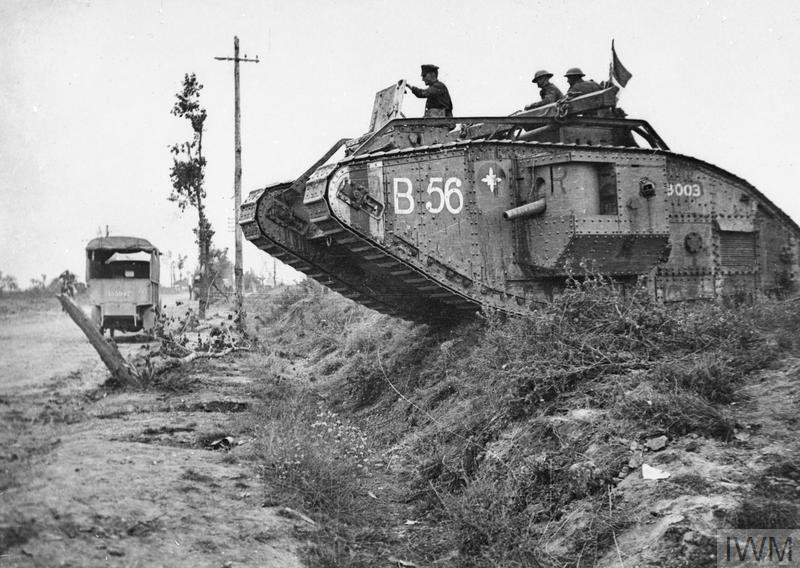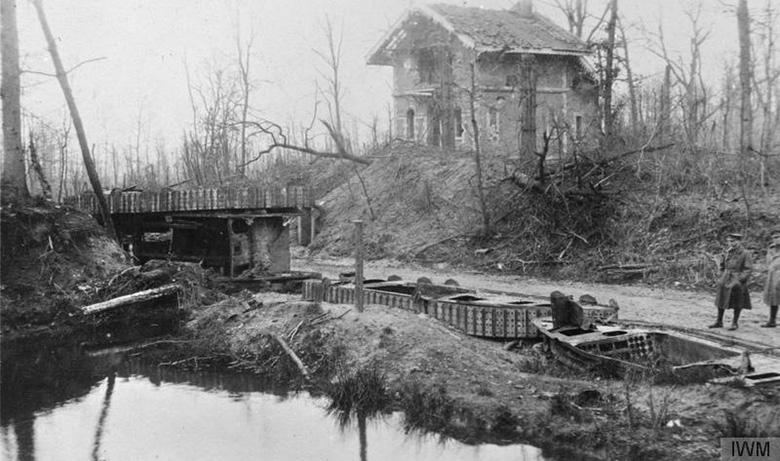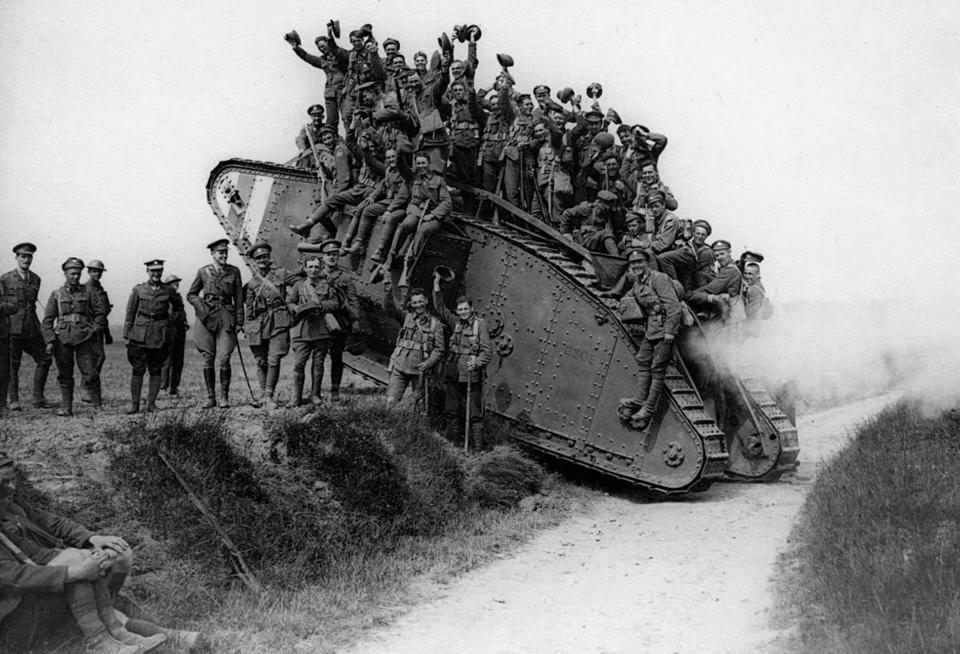The First Great Tank Battle of the War,
For the British Another Disappointment:
Tanks Alone are Not Enough.
Special to The Great War Project
(26 November) There is no let-up in the battle for Cambrai in northern France in these last days of November, a century ago.
At the same time, reports historian Martin Gilbert, “the first snow fell,” just one factor making it difficult to use tanks in the fight for French villages on the road to Cambrai on the Western Front.

The British threw hundreds of tanks into the battle for Cambrai.
“The war of tank movement,” Gilbert reports, “was replaced by that of hand-to-hand fighting.”
The British had hoped – with nearly 500 tanks and more than a thousand artillery pieces according to historian Michael Neiberg — that the battle for Cambrai would be the turning point, but it is not.
“Within two weeks,” writes historian Gilbert, “it failed utterly to be the hoped for turning point.”
The British send in tanks to seize the village of Fontaine on the road to Cambrai. It is a terrible and disastrous move.
Thus did the combatants begin to understand the limits of tank warfare,” writes Gilbert.
“Cambrai pointed the way to a new kind of war,” observes Neiberg, “but also showed that tanks alone were not sufficient.”

British tanks dead and buried on the road to Cambrai.
“Tanks were sent into the narrow streets for which they were quite unprepared,” Gilbert writes. “There was horrible slaughter in Fontaine,” one tank officer reports. He had spent weeks planning the use of tanks in the battle, but “had never tackled the subject of village fighting. It had never occurred to me that our infantry commanders would thrust tanks into such places,” he reports.
A German officer sees the battle from his side. “Armored vehicles have entered the village,” he writes, and they can seize ground but not hold it.
Their movements are hemmed in on all sides, which certainly should have been obvious to the officers planning the attack.
“The terror they have spread amongst us disappears,” the German officer writes. “We get to know their weak spots. A ferocious passion for hunting them down is growing.”

A disabled British tank on the road to Cambrai.
Reports Gilbert, “The Germans had discovered that individual hand grenades thrown on the top of the tanks or at their sides were ineffective. But if we tie several grenades together and make them explode beneath the tanks, the new weapon had found a new adversary.”
As a result, the fight is at a standstill, and the British command orders a halt in the fighting. “Cambrai,” writes historian Gilbert, “would remain in the unreachable distance.”
The Germans, though, have their own plans for Cambrai. The next day, they order a huge offensive. It begins with German guns firing 16,000 shells, among them gas shells.
Reports Gilbert, “many British companies fought until every man was killed or wounded.”
Many British soldiers turned and fled. “The German combination of gas shells and low flying attack aircraft was as effective for the Germans as the tanks had been for the British.

A British tank unit poses for the camera.
The British successfully regroup and hold the lines, but like so many other battles in this dreadful war, the casualties on both sides were crushing: 44,000 British and Canadian dead and wounded. A total of 53,000 on the German side.
